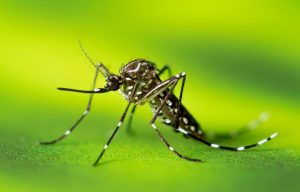By NewsDesk @bactiman63
The unprecedented monsoon rain from June to September 2022 triggered one of Pakistan’s worst floods in decades. It is estimated that over 33 million people, around 15 per cent of the total population of the country, have been affected by floods. The floods have caused around 800,00 houses to be fully damaged, and another 1,210,000 to be partially damaged, as well as the temporary relocation of millions of affected households.

Image/CDC
The spread of infectious diseases is one of the major challenges in flood affected communities, particularly in those areas where water remains stagnant for long periods of time–and this includes dengue fever.
A report today in Pakistan Today details the situation in a number of provinces:
Khyber Pakhtunkhwa: 385 cases in the past 24 hours. The number of active cases in the province currently stands at 2,314 and the total number of cases this year has reached 9,921.
Sindh province: 336 new infections, including 264 in Karachi. The total number of cases this year in the province has reached 11,142.
Punjab province: 193 new cases in the last 24 hours. The total number of dengue cases in Punjab this year has gone up to 7,428.
Islamabad: 93 new dengue cases in the last 24 hours. The city’s total tally has risen to 2,679 this year.
In addition to dengue fever, Pakistan is also dealing with increases in malaria, diarrhea and skin infections.
Dengue is a disease caused by a virus spread through mosquito bites. The disease can take up to 2 weeks to develop with illness generally lasting less than a week.
Subscribe to Outbreak News TV on YouTube
Health effects from dengue include fever, headache, nausea, vomiting, rash, muscle and joint pain, and minor bleeding.
Dengue can become severe within a few hours. Severe dengue is a medical emergency, usually requiring hospitalization.
In severe cases, health effects can include hemorrhage (uncontrolled bleeding), shock (seriously low blood pressure), organ failure, and death.
- Corsica reports first autochthonous case of dengue
- Lassa virus endemic area may expand dramatically in coming decades: Scripps Research
- HDSA Tampa Team Hope Walk Returns December 3rd
- Marijuana-induced psychosis: An interview with author, Terry Hammond
- Spain reports first H5N1 avian influenza case: Media report
- Adenovirus cases rise to near 2,000 in Hanoi
- Ho Chi Minh City dengue cases up 590% in 2022

